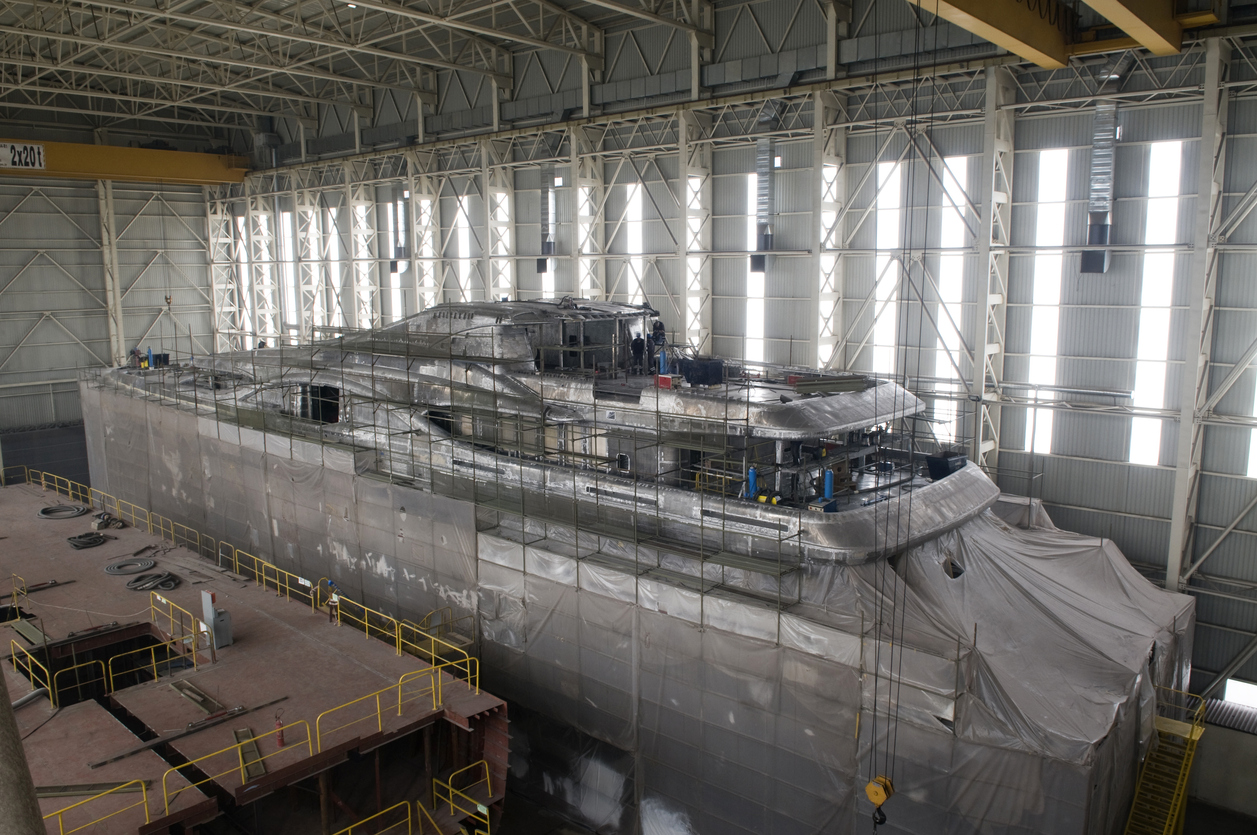Robotic Welding Helps Shipbuilding Keep Up With Growing Demands

Shipbuilders are investing more in robotic welding as they look forward to providing massive vessels for the US Navy and US Coast Guard thanks to growth in the military budget. The industry is experiencing a lack of skilled welders making automation a necessity to keep up with growing production demands. With improved production quality and more efficient workflow, shipbuilders are counting on robotic automation to keep them competitive.
Panel Welding with Automation
Engineers have designed and built large-scale automated welding systems to meet the needs of the shipbuilding industry. The systems include flat-plate joining stations that make use of robotic welding. These stations have the capability for integrated milling and welding. Robots have improved capacity, quality, accuracy, and cycle time.
The stations combine laser-hybrid arc welding with tandem metal active gas welding. These technologies allow for accurate welding of plates up to 60 ft in length and as thin as 4 mm. Integrated milling allows for precise seam preparation and efficient welding for the entire length of the plates.
The system joins plates at high volume and is still able to provide only minor deformations. It is also capable of full digital machine control for one- and two-sided welding. The station also offers fully-automated robotic welding for panel stiffening.
The Brains Behind Welding Automation
One major challenge for robotic welding in shipbuilding is the process involves non-repetitive tasks, as each product is fairly unique. Ship designs are also getting more complex due to innovations in shape and functionality. But shipbuilders and integrators are able to automate welding by linking the robots with 3D CAD models with offline programming software.
Multiple robots are guided by a programmable controller that keeps robot utilization high and precise. End users are able to integrate all of the power systems to a single system and program all of its basic functions at startup to limit the risk of human error. The robot controllers offer operators a touchscreen control panel.
Panel welding is not the only application for welding automation. Other sections can be welded with robots that are designed to weld in any position. Robots designed for these welds are keeping humans safer as they are not put in situations where they must hang or work in uncomfortable positions for extended hours.
Robotic welding offers the shipbuilding industry enhanced productivity and worker safety. To meet growing demands, more and more manufacturers are turning to automation to maintain their competitive edge.
To learn more about Genesis robotic welding solutions, visit our Robotic Welding Case Studies section.
Posted in Robotic Welding